Health
Doctors increasingly using AR smart glasses in operating room: ‘Potential to revolutionize surgeries’
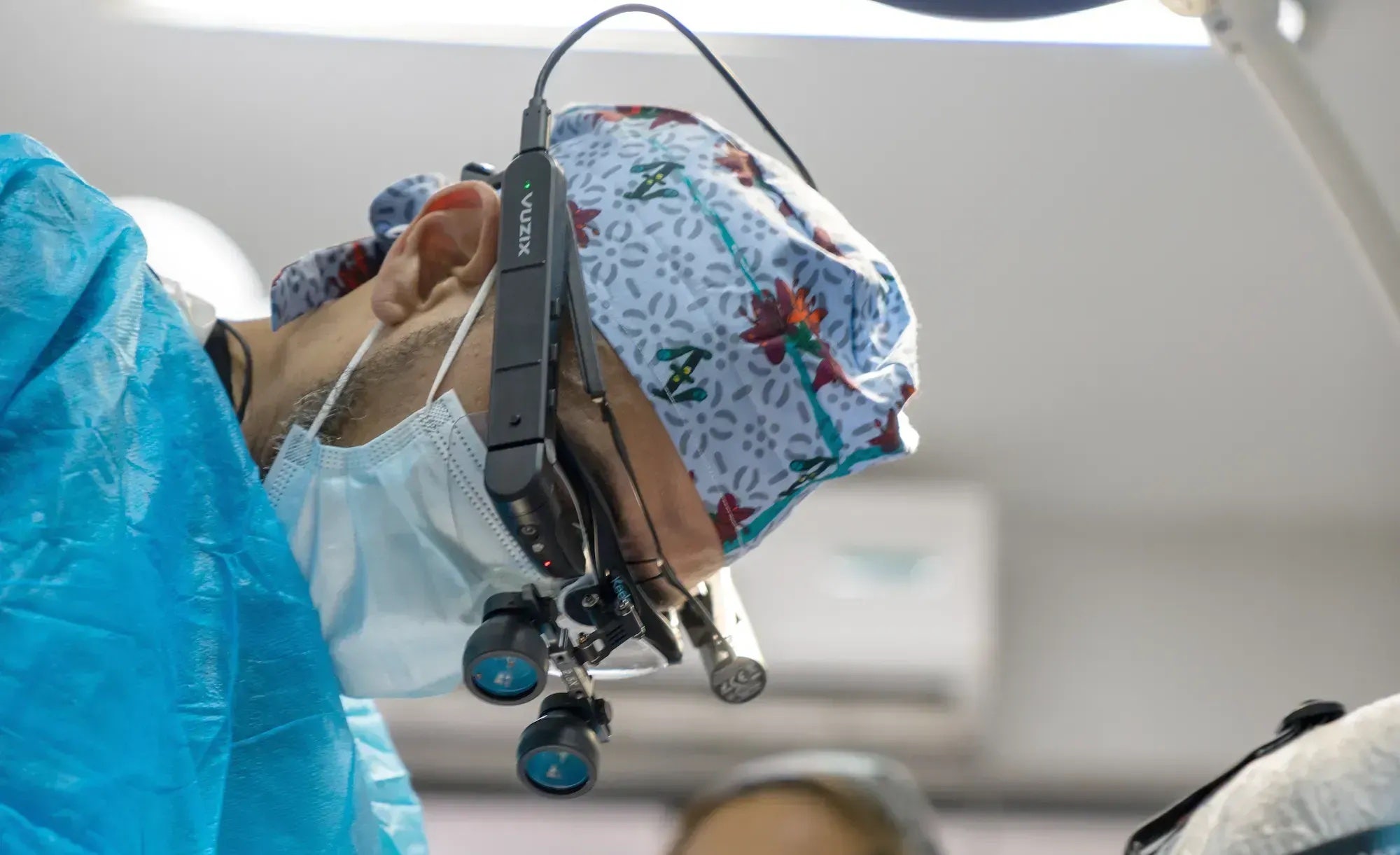
As artificial intelligence and other technologies continue to move into the medical field, a growing number of doctors are showing interest in how these innovations can transform all aspects of patient care — including surgery.
Augmented reality (AR) smart glasses are wearable devices that enhance how people interact with the world around them. This is one such technology that’s seeing wider use.
“AR devices provide users with an enhanced view of their surroundings by overlaying digital images, graphics and information onto the physical environment they see through the glasses,” said Paul Travers, president and CEO of New York-based Vuzix, a leading supplier of smart glasses and AR technologies and products, in an interview with Fox News Digital.
AI IDENTIFIED THESE 5 TYPES OF HEART FAILURE IN NEW STUDY: ‘INTERESTING TO DIFFERENTIATE’
In the operating room, smart glasses allow surgeons to access important information they need in a real-time, hands-free environment — without having to look away from the procedure to check a computer screen.
A quarter of U.S. surgeons have already started using AR smart glasses.
Augmented reality smart glasses — wearable devices that enhance how people interact with the world around them — are in wider use today. (Vuzix)
Meanwhile, an additional 31% of surgeons are considering using them, according to a study by global research firm Censuswide, which gathered insights from over 500 surgeons across America.
Forty-nine percent of the surgeons said they believed AR smart glasses could reduce complications and fatalities in the operating room, said the study, commissioned by Vuzix.
AI TOOL HELPS DOCTORS MAKE SENSE OF CHAOTIC PATIENT DATA AND IDENTIFY DISEASES: ‘MORE MEANINGFUL’ INTERACTION
Other benefits cited by surgeons included greater access to in-depth information within their field of view, less need for entry and exit from the operating room, and potential cost reductions in surgical equipment and staff, according to a press release announcing the findings.
The surgeons also said that AR glasses could promote collaboration with remote clinical teams and could expedite prep times before surgery.

A quarter of U.S. surgeons have already started using AR smart glasses, while an additional 31% are considering using them, one study found. (Vuzix)
“This report reveals the transformative power of AR technology in improving patient outcomes,” said Travers.
“By providing real-time information, remote assistance and advanced visualization capabilities, AR smart glasses have the potential to revolutionize surgeries.”
Vuzix’s smart glasses are designed specifically to work in the operating room, Travers noted.
Unlike other larger, bulkier models, these are “super lightweight,” he said — just 2.8 ounces. “They slide right up next to the eye loops the doctor is wearing,” he added.
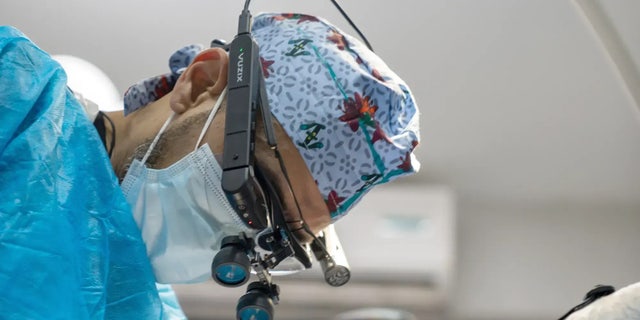
A surgeon at Ohana One, a Los Angeles-based company that cultivates surgical training programs using Vuzix smart glass technology in developing areas around the world, is shown using Vuzix glasses. (Ohana One/Vuzix)
“The newest pair that we just came out with, the ultralight, look exactly like a pair of Oakleys,” said Travers
AR combined with AI: ‘Game-changing stuff’
Some of the companies using Vuzix’s smart glasses technology, such as the virtual surgery platform Proximie, pair the AR smart glasses with artificial intelligence.
“Proximie is using the smart glasses to record the operations, putting them in a database and using AI to go back and compile all of that information,” Travers said.
“That way, it will be available for the next time this operation is being done, along with all the learnings that have happened in the past.”
“AR smart glasses have the potential to revolutionize surgeries.”
For example, if a surgeon is putting in a stent during heart surgery, the AI engine can provide recommendations for the best type of stent for that particular patient, based on the last thousand similar operations.”
CHATGPT SHOWS ONE DANGEROUS FLAW WHEN RESPONDING TO HEALTH CRISIS QUESTIONS, STUDY FINDS
“The AI engine can help pick and choose the best kinds of solutions, live in the operating room,” Travers said. “That’s game-changing stuff, when you have a history of thousands of operations at the doctor’s beck and call during live operations.”
Collaborating for better patient outcomes
One of the primary applications of Vuzix’s AR smart glasses is joint collaboration between doctors in different locations.
The glasses come equipped with sensors, cameras and connectivity features to enable interactive experiences. These include streaming what the wearer sees to a remote expert who can offer guidance and even draw or annotate over what the wearer is seeing in real time, said Travers.
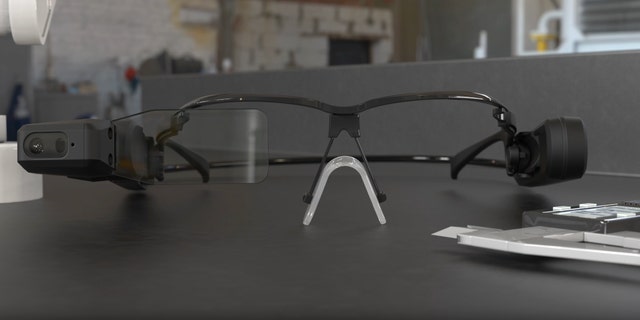
Vuzix’s M4000 smart glasses (pictured) offer ultra-bright, see-through waveguide optics with lightweight ergonomics, the company said. (Vuzix)
A doctor in South Africa, for example, may need assistance when doing an open-heart surgery procedure for the first time. In this case, an expert in San Francisco or New York City can log in and help remotely.
“It’s just like he’s standing right next to the doctor in the operating room in South Africa — he can draw on what the doctor is seeing on the overlay of the 4K broadcast-quality camera feed and say, ‘Cut this tissue first,’ or, ‘Use this stent instead of that one,’” Travers explained.
In that type of scenario, he said, the technology actually could help save the patient’s life.
Glasses ‘merge two different views into one single view’
Doctors are also using Vuzix’s smart glasses to enhance training for medical students.
One example Travers cited is a doctor who’s getting ready to do open heart surgery and wants to teach 300 students how to do this particular kind of procedure.
Using AR smart glasses, the doctor can transmit 4K broadcast-quality video and audio as he or she operates.
HOW CREEPY AUGMENTED REALITY ENABLES SEEING THROUGH WALLS
“As the doctor is doing the operation, students from around the world can log into a HIPAA-compliant livestream and the doctor can describe each step along the way,” he said.
AR glasses offer a “huge step forward” in this type of training, which isn’t physically possible in the operating room, Travers pointed out.
“The five people who are around the doctor have just enough space to help him with the operation,” he said. “There is no way another person can sit there, let alone see what’s going on inside the chest cavity of the person that’s being operated on.”
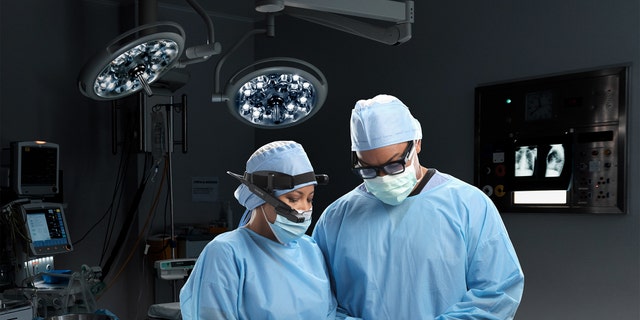
Vuzix’s smart glasses are designed specifically to work in the operating room, the company’s CEO said. (Vuzix)
Ahmed Ghazi, a New York-based associate professor of urology and oncology at the Brady Neurological Institute at Johns Hopkins University, has been using the Vuzix smart glasses when performing surgeries — primarily to train and educate students in various locations.
The trainee wears the glasses, which project what the person is seeing onto a transparent frame that overlays Ghazi’s hands onto the field of view.
CLICK HERE TO SIGN UP FOR OUR HEALTH NEWSLETTER
“The glasses merge two different views into one single view, so I can observe what the trainee is doing,” Ghazi told Fox News Digital. “They’re able to see my hands instructing them on how to maneuver through a certain part of the procedure.”
Potential risks and limitations
One of the main limitations Ghazi has experienced with smart glasses is that there can sometimes be a lag in the transmission of information when using Wi-Fi.
However, with a solid internet connection, he said it works very well.
“We had some dropped calls initially, but then after an update, we didn’t have that issue whatsoever,” he said.
As far as using the Vuzix glasses in surgery, Ghazi said he believes the hardware and software are in place to enable that, yet more testing needs to happen first.
“We would have to go through tests to make 100% sure there are no dropped calls and no technical issues, compared to other types of virtual or augmented reality platforms,” he said.

Health
Life after death: Take a glimpse into the world of cryonics
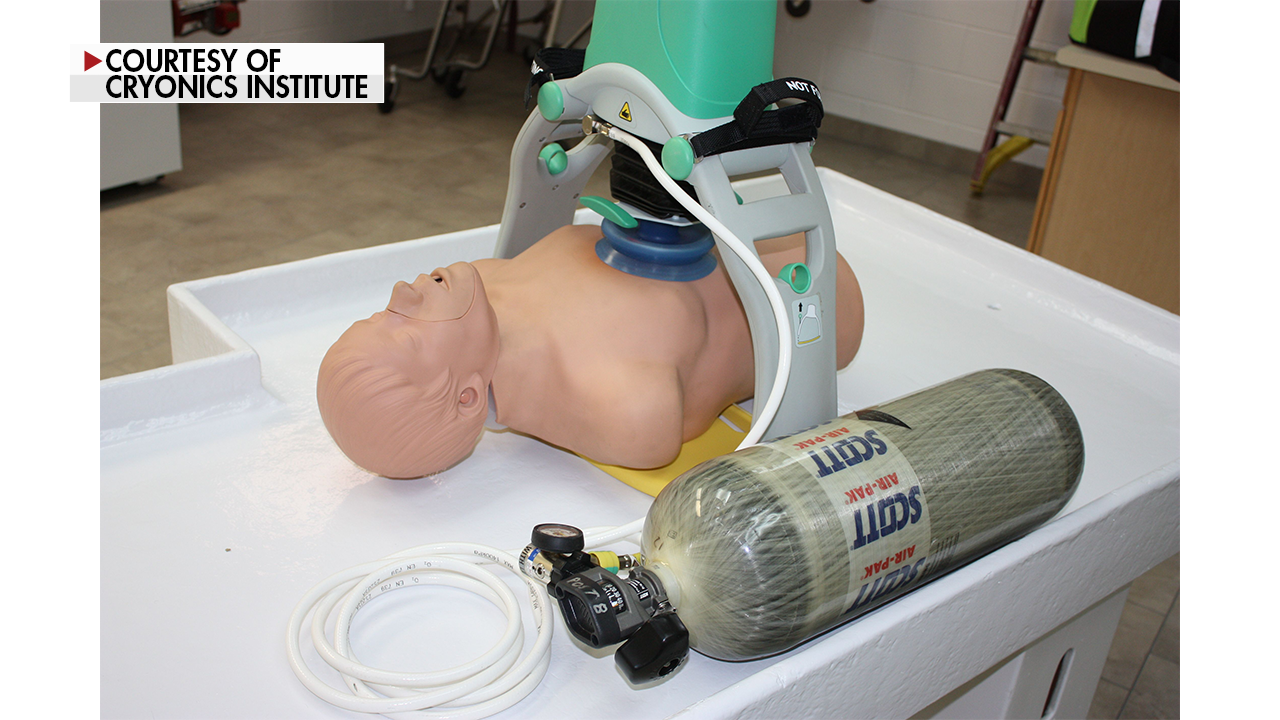
Since the age of 13, Joseph Kowalsky has harbored a fascination with life after death, pondering ways to extend his existence indefinitely.
Today, Kowalsky, now 59, is among some 2,000 individuals who have signed up with the Cryonics Institute in Clinton Township, Michigan, betting on a future where death is not the end.
Chilling prospect of immortality
Cryonics, the process at the heart of Kowalsky’s hopes, involves preserving human bodies at ultra-low temperatures in the anticipation that future science will one day revive them.
MEN’S ENERGY AND VITALITY PLUMMETS FOR 6 REASONS. BOOST IT BACK UP THIS WAY
Shortly after a person dies, organizations like the Cryonics Institute use a heart-lung resuscitator, circulate a medical-grade antifreeze in the blood and suspend the body in aluminum pods filled with liquid nitrogen.
Dennis Kowalski, current president of the Cryonics Institute (and no relation to Joseph Kowalsky), told Fox News that over 250 individuals are currently in “suspension” at the Michigan facility.
Cryonics involves preserving human bodies at ultra-low temperatures in the anticipation that future science will one day revive them. (Cryonics Institute)
Could defying death be affordable?
The Cryonics Institute is just one player in a burgeoning industry.
Alcor, the world’s oldest cryonics company, which is based in Scottsdale, Arizona, boasts a state-of-the-art facility where more than 200 individuals are preserved.
MEDITERRANEAN DIET COULD HELP WOMEN LIVE LONGER, HARVARD STUDY FINDS
For those opting for whole-body preservation, the price tag is $200,000, while brain-only preservation costs $80,000.
Alcor CEO James Arrowood dispels the notion that cryonics is solely for the wealthy, highlighting that many clients use life insurance policies to cover costs.
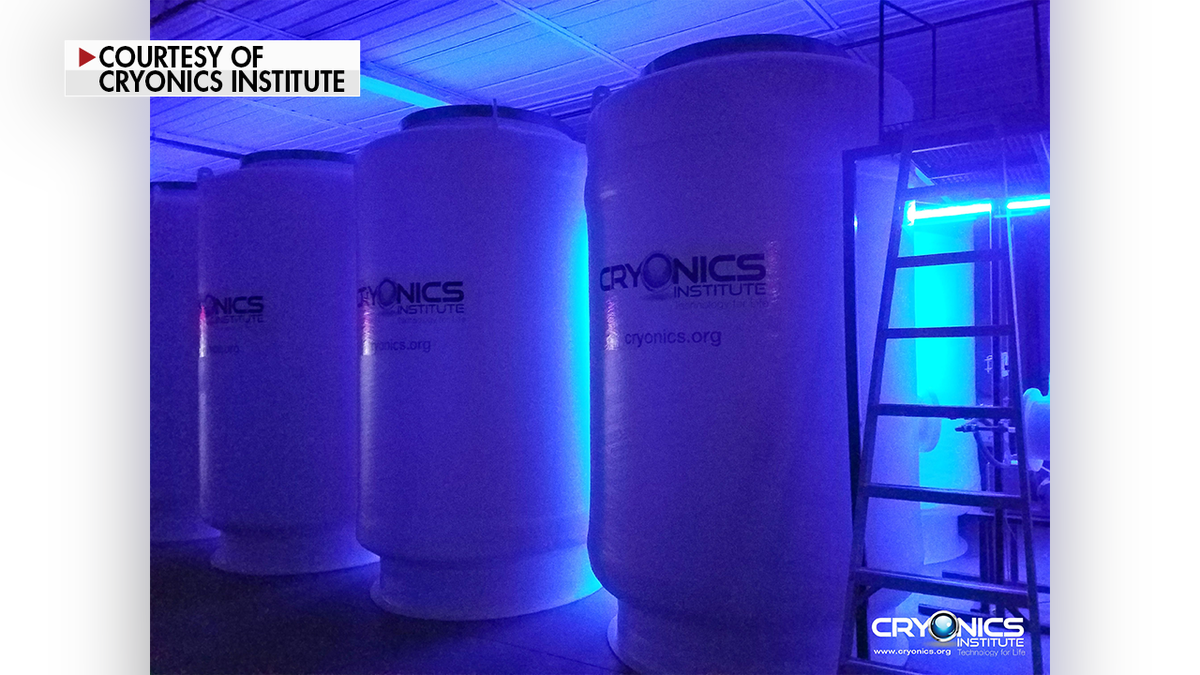
Over 250 individuals are currently in “suspension” at the Michigan facility, the president of the Cryonics Institute told Fox News. (Cryonics Institute)
“About 80% of people who sign up are middle-class,” Arrowood told Fox News.
He pointed out that the clientele includes notable figures such as baseball legend Ted Williams, whose head and body were cryopreserved separately.
Skeptics cast doubt
Critics dismiss cryonics as speculative and unproven, labeling it an “iceberg scheme” lacking scientific backing.
CLICK HERE TO SIGN UP FOR OUR HEALTH NEWSLETTER
“It’s a sad case of people being beguiled by a very understandable dream of resurrection,” Clive Coen of King’s College London told Fox News.
The neuroscience professor raised concerns over the damage inflicted during the preservation and revival process, warning that “there will be billions of mini-strokes in every millimeter of brain tissue” due to the inability of antifreeze to traverse the brain’s complex landscape.
Hope springs eternal for death defiers
There is currently no scientific evidence or successful case of a human being revived from a cryonically preserved state.
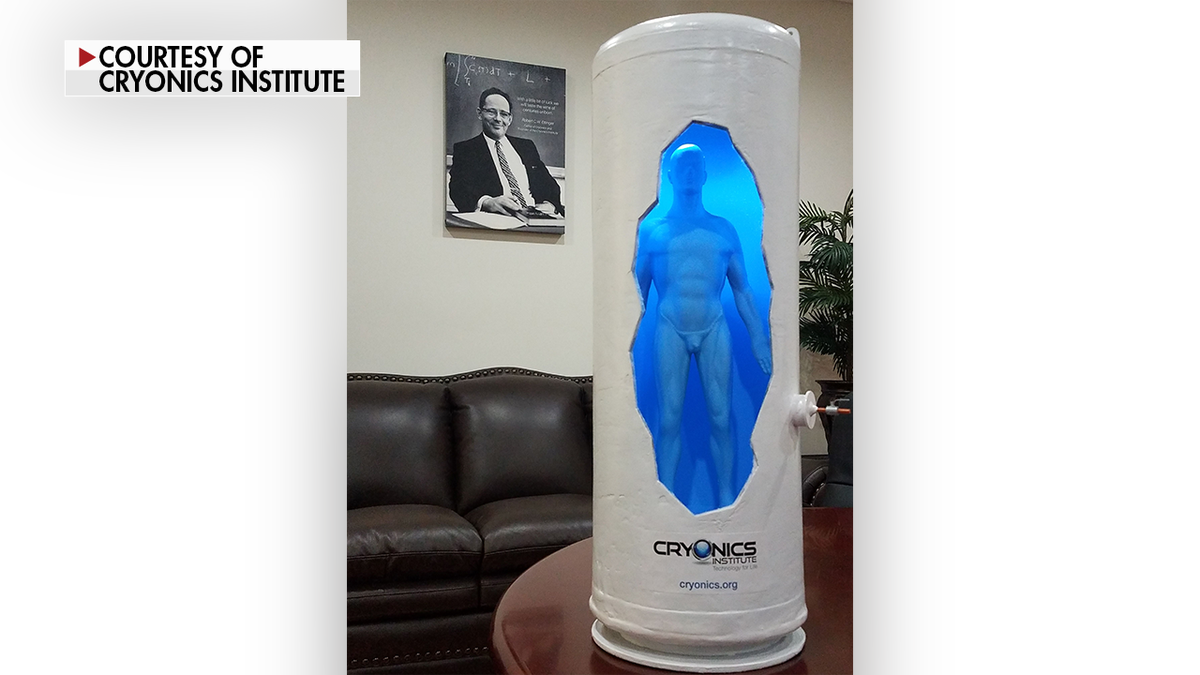
For those opting for whole-body preservation, the price tag is $200,000, while brain-only preservation costs $80,000. (Cryonics Institute)
Despite the skepticism, Joseph Kowalsky, who formerly worked with the Cryonics Institute, remains undeterred.
“Worst-case scenario, I’m still dead … And the upside? It could be a potentially life-saving medical technique,” he said.
For more Health articles, visit www.foxnews/health
As science and ethics continue to grapple with the implications of cryonics, individuals like Kowalsky illustrate a deep-seated hope for defying mortality, one frozen body at a time.
Andres del Aguila and Griff Jenkins contributed to this report.
Health
The Carnivore Diet: Is There Science Behind the Fad? | Woman's World

Sign Up
Create a free account to access exclusive content, play games, solve puzzles, test your pop-culture knowledge and receive special offers.
Already have an account? Login
Forgot your password?
Get back to the Sign In
Use left and right arrow keys to navigate between menu items.
Use escape to exit the menu.
Health
For diabetes patients, inhaled insulin is shown just as effective as injections and pumps

Most of the 38 million people living with diabetes in the U.S. use daily injections or insulin pumps to keep glucose at safe levels — but new research suggests that a third option could be just as effective.
In a study led by Dr. Irl B. Hirsch, M.D., medical director of the Diabetes Care Center of the University of Washington Medical Center, an inhaled form of insulin — similar to an asthma inhaler — worked just as well as injections or pumps to control type 1 diabetes.
The research was presented last week at the American Diabetes Association (ADA)’s 84th Scientific Sessions in Orlando, Florida.
EATING YOGURT COULD HELP PREVENT ONE COMMON DISEASE, ACCORDING TO THE FDA
The clinical trial tested a product called Afrezza, an inhaled insulin made by MannKind Corporation in California.
Afrezza, the only inhaled insulin on the market, has been available since getting FDA approval in June 2014.
An inhaled form of insulin worked just as well as injections or pumps to control type 1 diabetes in a recent study. (iStock/MannKind)
Benefits of a third option
“In those with type 1 diabetes, insulin is required for survival,” Hirsch told Fox News Digital in an interview.
“With continuous glucose sensing, glucose control has been dramatically improved — but not everyone reaches the target with multiple injections or pumps, and there are many pros and cons with each therapy,” he said.
EATING ONE TYPE OF FRUIT REGULARLY COULD REDUCE DIABETES RISK IN WOMEN, STUDY SUGGESTS: ‘INCREDIBLY HEALTHY’
With pumps, people must wear the device, which can lead to skin problems.
They also have to purchase extra accessories.
Blood glucose levels can also drop with exercise, Hirsch warned, which can be problematic.

Afrezza, an inhaled insulin pictured here, is made by MannKind Corporation in California. (MannKind)
“Injections overall can be more convenient for some, but they don’t do as well as pump patients,” he said.
With Afrezza, the product is inhaled into the lungs before meals, and the fast-acting insulin minimizes the glucose spike often seen after eating, Hirsch noted.
“Patients with type 1 diabetes should consider this as another option for their mealtime insulin, and talk to their doctor about this choice.”
During the 17-week study, researchers evaluated the results of 141 adults who were assigned to either use the Afrezza inhaler or continue with traditional methods of injection or pump delivery.
At the 17-week mark, all participants switched to the inhaler for another 13 weeks.

Dr. Irl B. Hirsch, M.D., medical director of the Diabetes Care Center of the University of Washington Medical Center, led the new study. (MannKind)
All groups were assessed with continuous glucose monitoring at the start of the study, at 17 weeks and again at 30 weeks.
Among the inhaled insulin group, 30% of participants reached their target glucose levels (less than 7% blood sugar) compared to 17% of the people using injections and pumps.
There was no difference in hypoglycemia (low blood sugar) between the groups.
UTAH MOM FIGHTS FOR HER DAUGHTER’S ACCESS TO DISCONTINUED DIABETES MEDICATION: ‘LIFE-SAVING’
“In general, there was no difference in our primary endpoint, HbA1c, a reflection of average blood sugar,” Hirsch said.
“But that alone is misleading — many patients did better with their glucose control, while others did worse.”
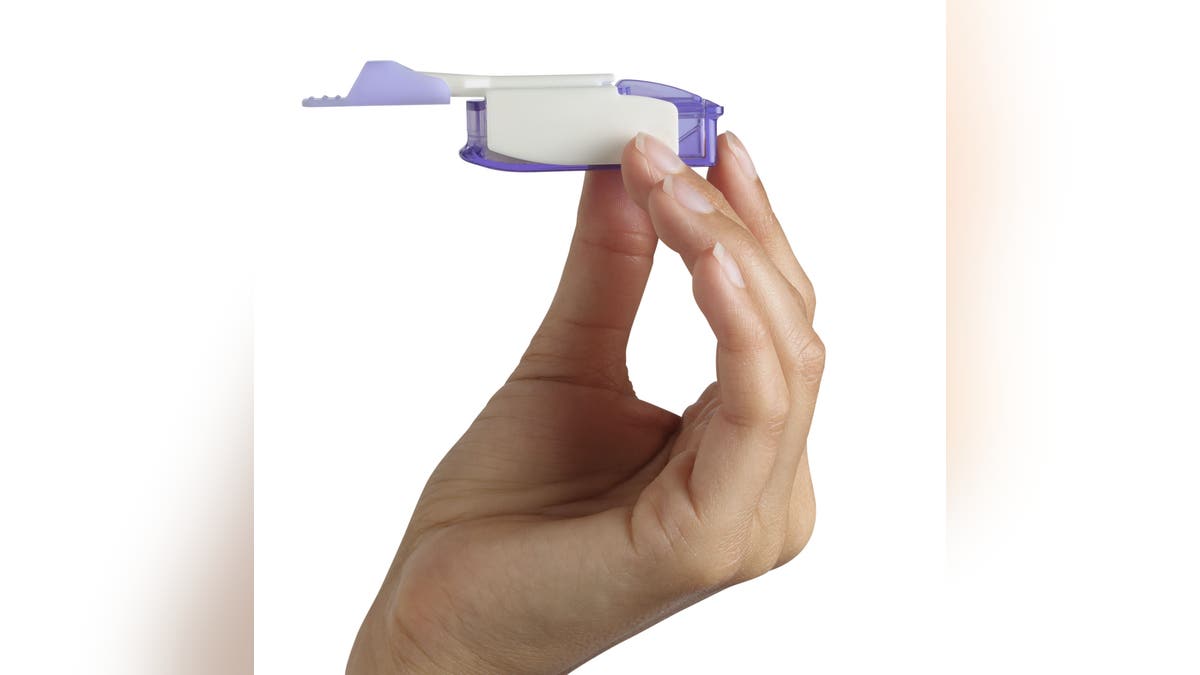
With Afrezza, the product is inhaled into the lungs before meals, and the fast-acting insulin minimizes the glucose spike often seen after eating, a doctor said. (MannKind)
“The point is, inhaling insulin isn’t for everyone, but some did better than they did on their pumps.”
The people who saw the best results inhaled insulin between meals and at bedtime, Hirsch added.
At the end of the study, more than half of the participants said they would opt to stay on the inhaled insulin therapy.
“The biggest takeaway is that patients with type 1 diabetes should consider this as another option for their mealtime insulin, and talk to their doctor about this choice,” he recommended.
‘Adds value’
The American Diabetes Association acknowledged the promise of the study findings in an email to Fox News Digital.
“We look forward to our Scientific Sessions every year to see data like the INHALE-3 study’s findings, which have the potential to expand diabetes care,” Raveendhara Bannuru, M.D., PhD, the ADA’s vice president of medical affairs and quality improvement outcomes in Boston, Massachusetts, told Fox News Digital via email.
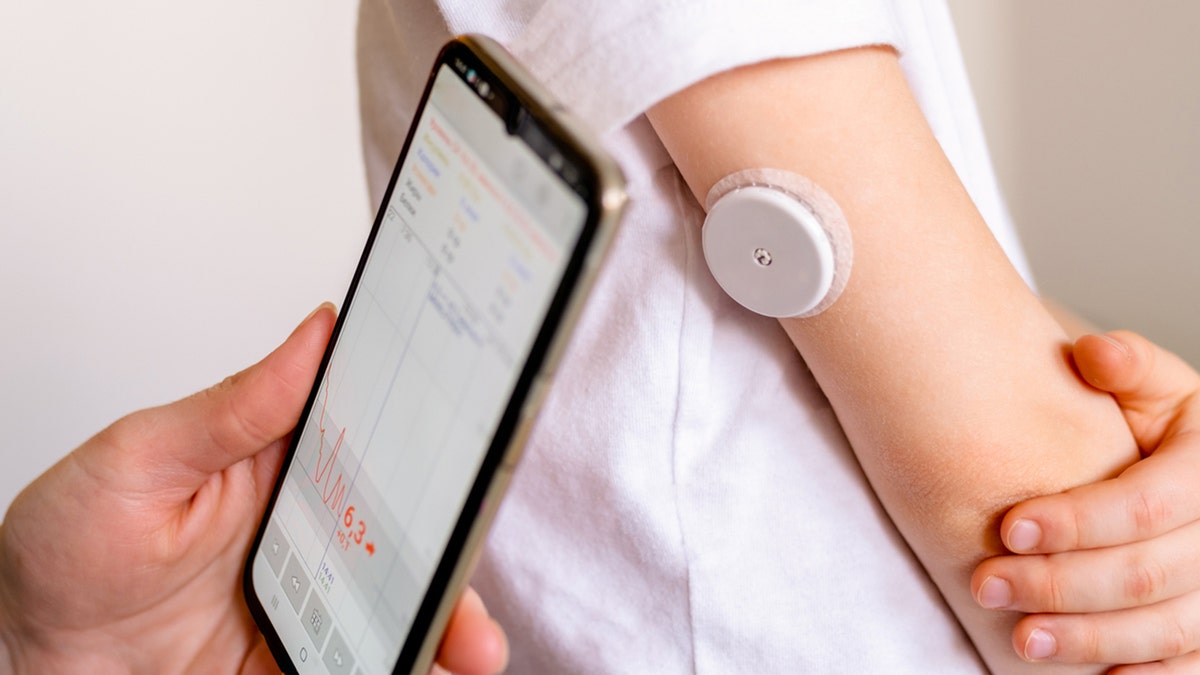
“With continuous glucose sensing, glucose control has been dramatically improved,” a doctor told Fox News Digital. (iStock)
“We are hopeful for the continuous development of alternative insulin delivery methods that could offer options for people living with diabetes,” the group also said in the statement.
“The INHALE-3 trial demonstrated that inhaled insulin, combined with insulin degludec, effectively reduces A1c levels without increasing hypoglycemia or weight gain in people with type 1 diabetes. This adds value to the options in insulin therapy.”
Potential risks and limitations
While more people met their glycemic targets with Afrezza, some subjects saw worse readings when switching from usual methods to inhaled insulin — “potentially due to missing doses of inhaled insulin during the day and/or underdosing going into bedtime,” the researchers wrote.
CLICK HERE TO SIGN UP FOR OUR HEALTH NEWSLETTER
“We didn’t see any concerns,” Hirsch said when asked about side effects.
“As expected, a few people coughed immediately when dosing their insulin, but no major concerns were seen and everyone continued on their inhaled insulin.”

“Not everyone reaches the target with multiple injections or pumps, and there are many pros and cons with each therapy,” a doctor said. (iStock)
The most common side effects noted in the study were hypoglycemia, cough and throat pain or irritation.
Afrezza has been linked to a risk of acute bronchospasm in patients with chronic lung disease, such as asthma or COPD, according to the manufacturer.
“Inhaling insulin isn’t for everyone, but some did better than they did on their pumps.”
Before starting Afrezza, patients should see a doctor for a physical examination and testing to measure lung function.
Patients who smoke or who recently quit smoking should not take the inhaled medication.
For more Health articles, visit www.foxnews/health
Fox News Digital reached out to MannKind requesting additional comment.
-

 News1 week ago
News1 week agoJoe Biden, Barack Obama And Jimmy Kimmel Warn Of Another Donald Trump Term; Star-Filled L.A. Fundraiser Expected To Raise At Least $30 Million — Update
-

 News1 week ago
News1 week agoIt's easy to believe young voters could back Trump at young conservative conference
-

 World1 week ago
World1 week agoRussia-Ukraine war: List of key events, day 842
-

 World1 week ago
World1 week agoProtesters in Brussels march against right-wing ideology
-

 World1 week ago
World1 week agoSwiss summit demands 'territorial integrity' of Ukraine
-

 News1 week ago
News1 week agoA fast-moving wildfire spreads north of Los Angeles, forcing evacuations
-

 Politics1 week ago
Politics1 week agoJudge rules Missouri abortion ban did not aim to impose lawmakers' religious views on others
-

 World1 week ago
World1 week agoAl-Qaeda affiliate claims responsibility for June attack in Burkina Faso
/cdn.vox-cdn.com/uploads/chorus_asset/file/24954366/236805_Quest_3_and_Ray_Ban_meta_glasses_BFarsace_0027.jpg)












